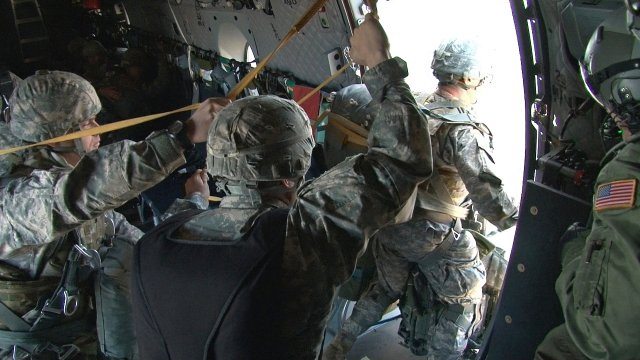The Army is one step closer to marrying body armor and parachutes thanks to recent test jumps with a select few paratroopers here.
In February, the Bragg-based Airborne and Special Operations Test Directorate trained two-dozen scout paratroopers with the 82nd Airborne Division’s 3rd Squadron, 73rd Cavalry Regiment, how to properly wear the new T-11 parachute and the third generation Improved Outer Tactical Vest, or IOTV, and then led the paratroopers on two test jumps.
The daylight parachute jumps were conducted from twin-engine aircraft with the paratroopers carrying an equipment load approximating what they might carry into combat, said the Test Directorate’s test officer, Leon Price.
For a final test, paratroopers simulated an unintentional water landing by jumping into a pool while wearing body armor and parachute harness, said Price.
“The resulting test report will travel up through the Army Test and Evaluation Command, Program and project manager, and eventually to the Advanced Airborne School, where they may adjust the [Airborne Standing Operating Procedures],” he said.
As the senior officer among the test paratroopers, Capt. James Langdeaux was initially weary that the IOTV would not flex enough on landing to avoid injuries, but none of his paratroopers were injured in either jump, he said.
As the “safety” aboard the aircraft, jumpmaster-qualified Langdeaux didn’t actually jump himself during the testing.
“There was some discomfort with the overall weight, but everyone had a safe landing,” he said.
Staff Sgt. Charles Jinks, a squad leader and jumpmaster who has spent seven years in Bragg’s airborne community, said that he found paratrooper involvement in the test and evaluation reassuring.
“It was reassuring to see our observations recorded and passed along to be used,” said the Battle Creek, Mich., native.










